SEEING THE FUTURE, CHANGING THE FUTURE
HERVE FAUCHER GIVES BACK IN BUSINESS, IN THE COMMUNITY AND AROUND THE WORLD


HERVE FAUCHER GIVES BACK IN BUSINESS, IN THE COMMUNITY AND AROUND THE WORLD

Hemp has the power to create a healthier and more sustainable planet and HEMPALTA is here to sow the seeds of change. Working with progressive farmers, world-renowned researchers and the most modern technology, HEMPALTA sustainably processes industrial hemp in Alberta.
Founder and CEO Darren Bondar started HEMPALTA after selling a previous company, Spiritleaf, to Sundial Growers in 2021.
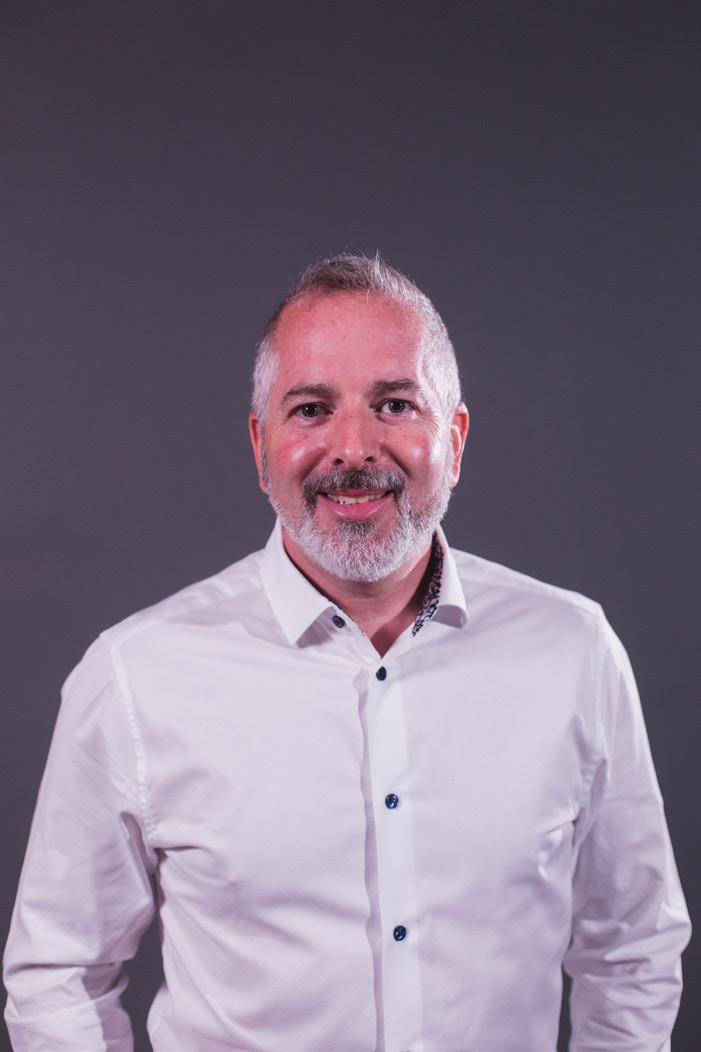
“The serial entrepreneur in me was already searching for the next big thing. I was looking for an idea that was healthy for the planet, good for the community and sustainable as a business,” says Bondar. “HEMPALTA started as a way to create something innovative while addressing sustainability.”
Bondar continues, “HEMPALTA provides solutions for a wide range of industries, including food preservation, pet care, garden care and industrial. We proudly support our local community by buying 100 per cent natural hemp grown in Southern Alberta, which we sustainably process and package at the HEMPALTA facility in Calgary.
“As one of the only commercial-scale hemp processors in North America, HEMPALTA utilizes the state-of-the-art HempTrain™ Advanced Processing system in its operations. The advanced technology we use is far less damaging to the fibers, creates no appreciable dust and in a single process separates the hemp plant into four output streams: long; strong bast fiber; a nutrient-rich green microfiber; and clean, dust-free, sizespecified hurd and micro-hurd.”
In short order, HEMPALTA achieved many milestones, including earning one of 15 (out of 900 applicants) spots in the SVG Ventures|THRIVE accelerator program and being recognized as an investable Foresight 50 company for cleantech.
Bondar adds, “In November 2022 we successfully completed our first equity crowdfunding round with the FrontFundr platform, raising just over $1 million for technology acquisitions, support sales and marketing. Recently we entered a 30-month sponsorship with the Wilder Institute/Calgary Zoo to support their mission of animal care and sustainable habitat design practices through our premium hemp-based animal bedding for the zoo’s giraffes.”
Sustainable, ethical production is at the forefront of the work at HEMPALTA, where they believe that hemp is a miracle crop that will improve the earth with each use. “Hemp is 100 per cent biodegradable, recyclable and reusable. It can grow in almost any climate or soil conditions. It’s Hemp to Better the Planet™,” smiles Bondar. “Through advances in cleantech and sustainable hemp processing, the next revolution in agriculture is taking root at HEMPALTA. Our sustainable practices, clean technology, innovative products and passionate and experienced team are what make us different and successful. We’re a local company with the potential to have a global impact.”
With his characteristic positive attitude, Bondar ensures the challenges faced by HEMPALTA are turned into opportunities for growth and learning.
ABOVE: DARREN BONDAR: PRESIDENT AND CEO OF HEMPALTA. RIGHT TOP: HEMPALTA TEAM. RIGHT MIDDLE: HEMPYCAT, AN ALL-NATURAL HEMP CAT LITTER. RIGHT BOTTOM: HEMP-FRESCO HEMP-BASED FOOD PRESERVATION PADS“As of now, the biggest challenge is keeping up with the increasing market demand. We are preparing for a facility expansion in 2024,” explains Bondar. “Another challenge is the lack of education and awareness among consumers, companies and legislative bodies. Although hemp has been legal in Canada since 1998 and in the U.S. since 2018, there is still a lot of stigma surrounding its uses. It is often associated with the cannabis
market, especially in terms of advertising, which causes issues due to community guidelines and restrictions. At HEMPALTA, we’re working to educate our audiences on the science behind industrial hemp and how it can be sustainably processed into different products that make the planet healthier.”

HEMPALTA partnered with ATB, which also plays into the brand’s success.

“ATB has been a trusted partner that has accompanied us since the beginning and continues to support us as we grow,” confirms Bondar. “We used a number of their startup programs for our first year of operation, company credit cards and other services, all of which helped us achieve our financial targets with operations and achieve growth at an accelerated rate. Their team is an extension of ours as we work together to understand the market trends and scout for opportunities ahead.”
He points out why ATB is different from other financial institutions.
“ATB supports diverse businesses and plays a role in our local community. It has teams that specialize in local industries such as agriculture and the energy sector. Working with a team that understands the culture is key to success as they are aware of the best practices to adopt in our business model.”
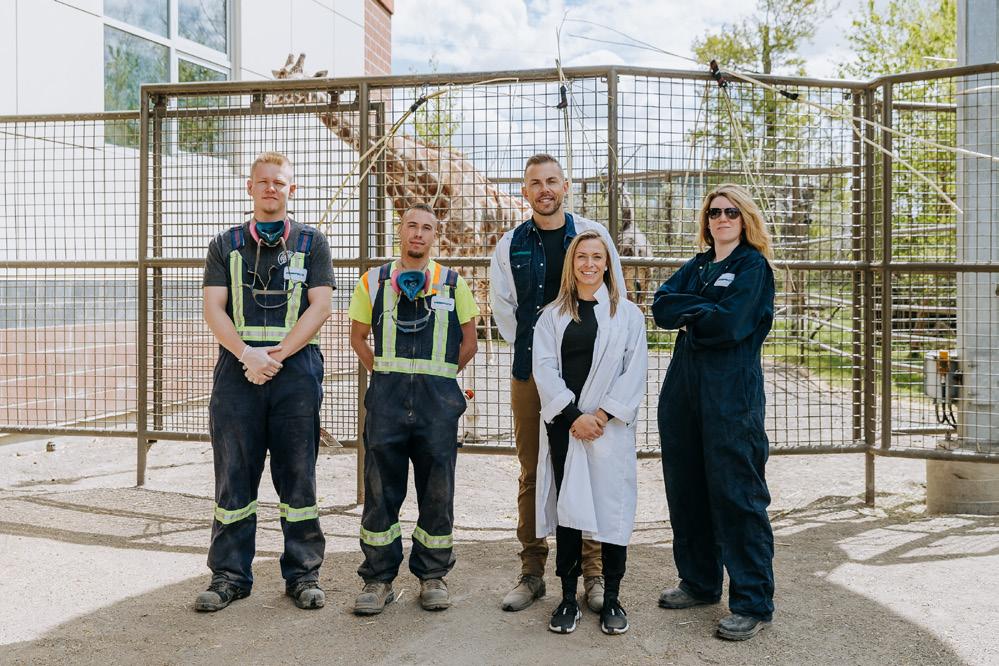
Bondar is justifiably excited about the future of HEMPALTA.
“We’re preparing to enter a potentially lucrative new market through optimized hemp hurd in hempcrete formulations. Hempsulation is an environmentally-friendly alternative to insulation, made from a mixture of hemp stalk hurds and lime binder. The resulting product is healthy, durable and sustainable. The product can also contribute to achieving netzero GHG emissions in the residential construction sector. As we consider a future where home building companies are committed to providing sustainable and net-zero homes, HEMPALTA is committed to providing them with the cleantech solutions needed to accomplish that.”
To explore more about this innovative and fast-growing company, visit www.hempalta.com and follow HEMPALTA on Facebook, Twitter, Instagram and LinkedIn.
ATB is pleased to present a 2023 profile series on the businesses and people who are facing challenges head-on to build a strong Alberta.


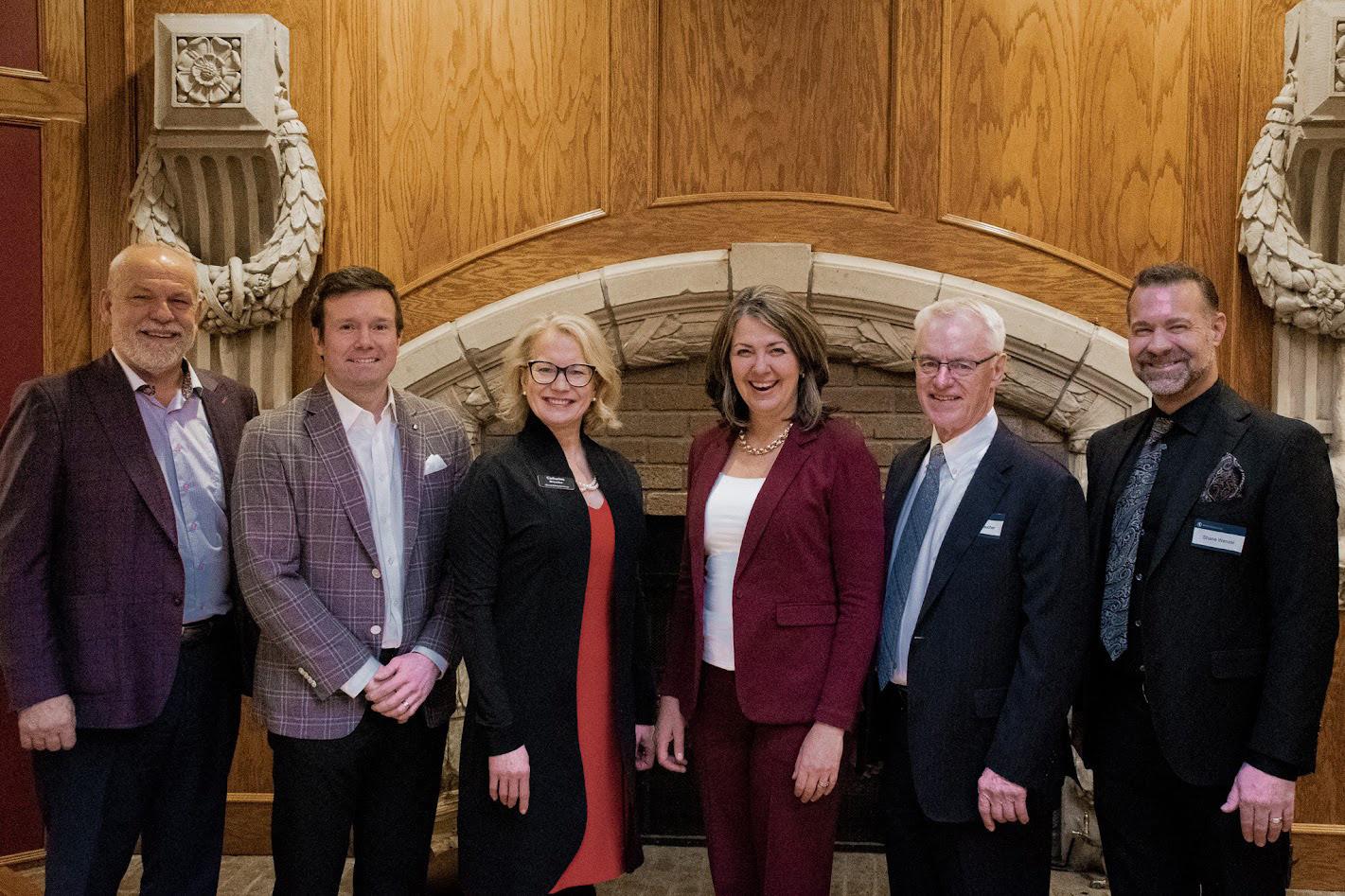
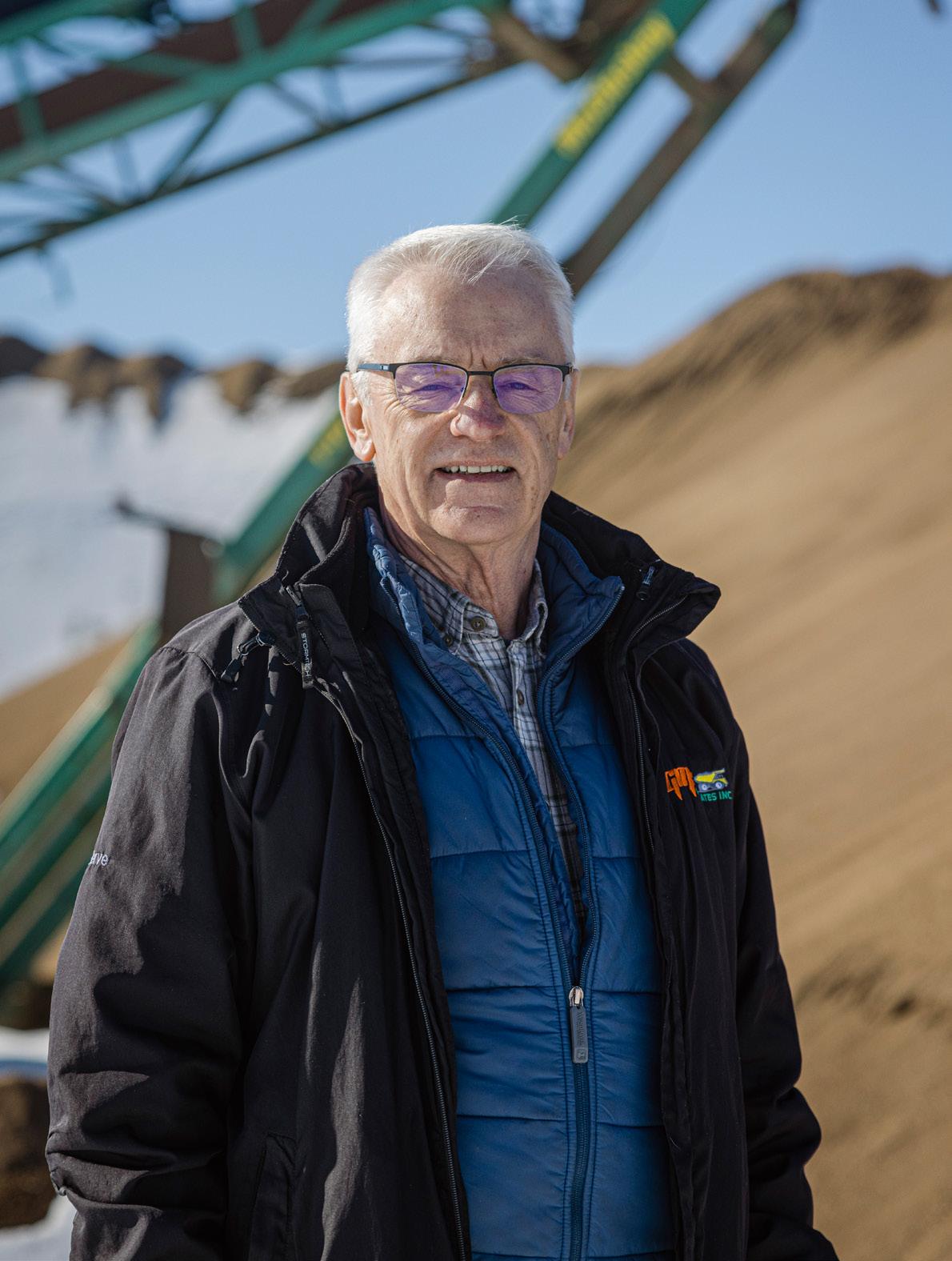
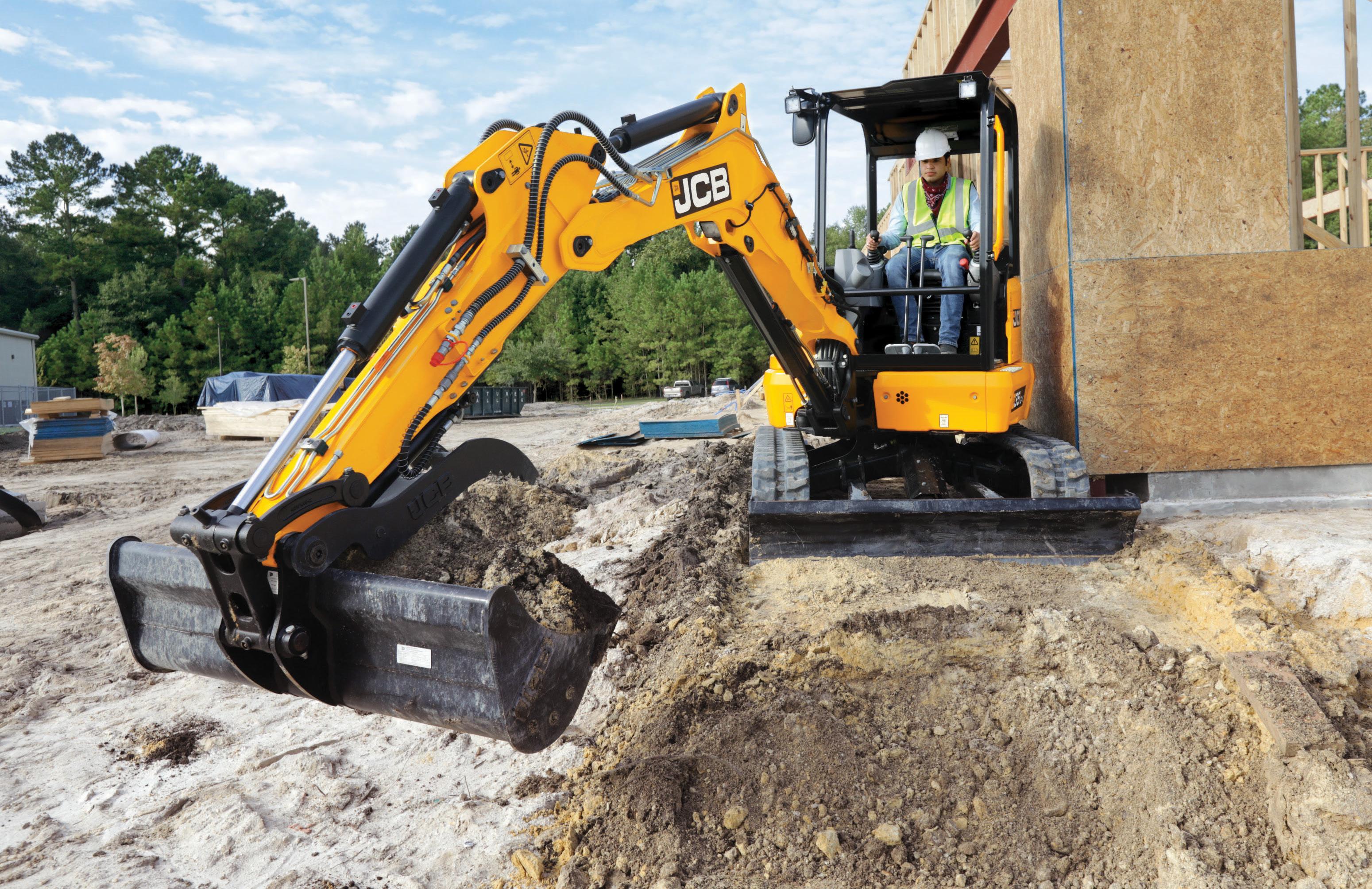

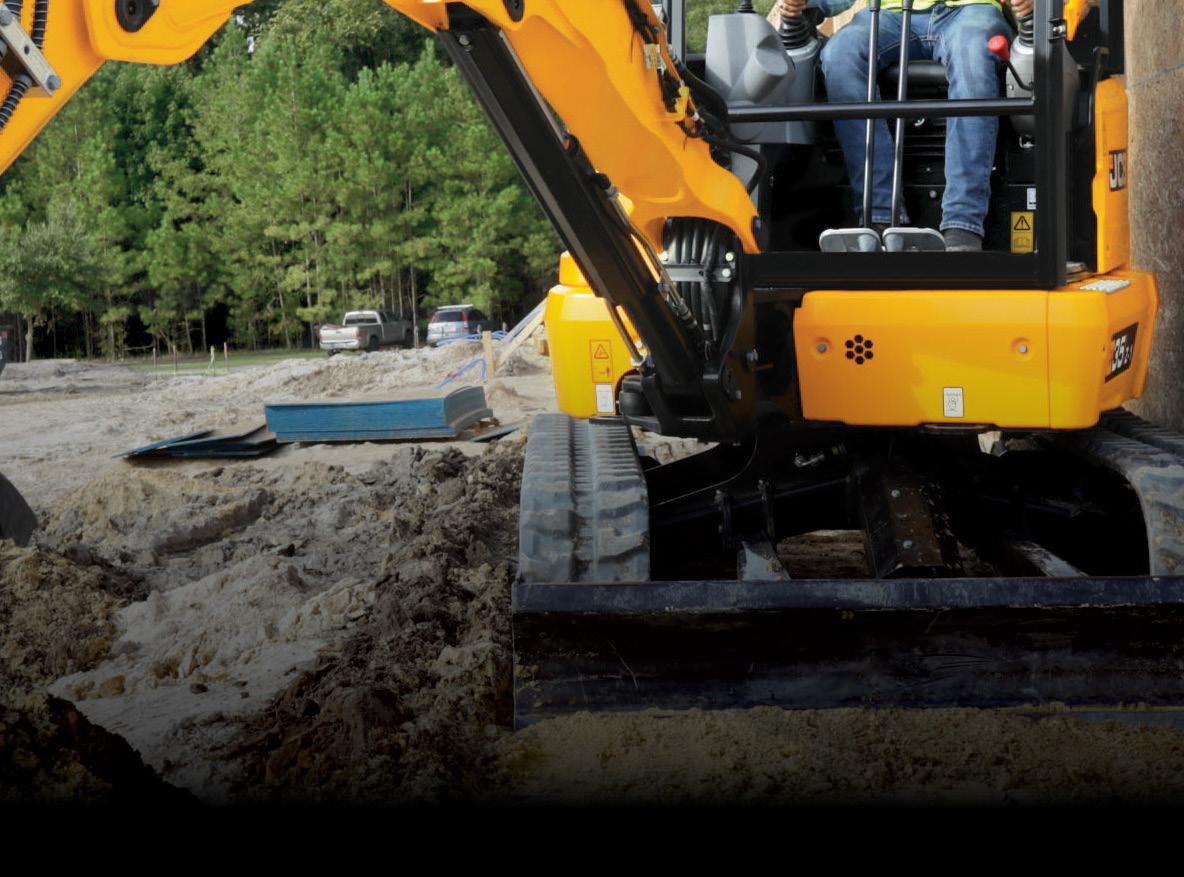
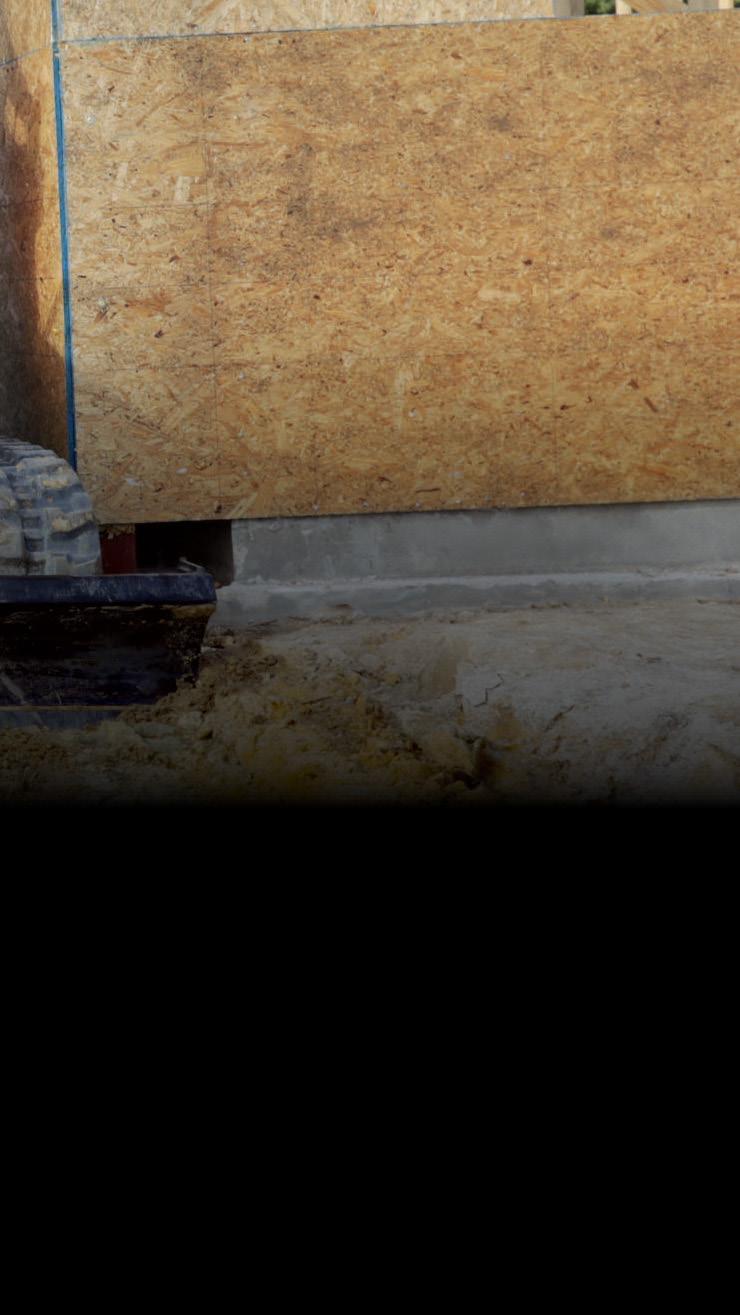











PUBLISHER
Business in Edmonton Inc.

ASSOCIATE PUBLISHER
Brent Trimming brent@businessinedmonton.com
EDITOR
Nerissa McNaughton
COPY EDITOR
Nikki Mullett
ART DIRECTOR
Jessi Evetts jessi@businessinedmonton.com
ADMINISTRATION/ACCOUNTING info@businessinedmonton.com
REGULAR CONTRIBUTORS
Catherine Brownlee
Elan MacDonald
THIS ISSUE’S CONTRIBUTORS
Nerissa McNaughton John Hardy
PHOTOGRAPHY
Cover photo by Production World ADVERTISING SALES
Mark McDonald 780-809-1914 mark@businessinedmonton.com

DIRECTOR OF CUSTOM PUBLISHING
Mark McDonald
780-809-1914 mark@businessinedmonton.com

Nikki Lacroix 780-809-1935 nikki@businessinedmonton.com

EDITORIAL, ADVERTISING & ADMINISTRATIVE OFFICES
#1780, 10020 - 101 A Ave. NW
Edmonton, AB T5J 3G2
Phone: 780.638.1777
Fax: 587.520.5701
Toll Free: 1.800.465.0322
Email: info@businessinedmonton.com
SUBSCRIPTIONS
Online at www.businessinedmonton.com
Annual rates:
$31.50 | $45 USA | $85 International Single Copy $3.50
Business in Edmonton is delivered to 27,000 business addresses every month including all registered business owners in Edmonton and surrounding areas including St Albert, Sherwood Park, Leduc/Nisku, Spruce Grove, Stony Plain and Fort Saskatchewan.
The publisher does not assume any responsibility for the contents of any advertisement, and all representations of warranties made in such advertising are those of the advertiser and not of the publisher. No portion of this publication may be reproduced, in all or in part, without the written permission of the publisher.
Canadian publications mail sales product agreement No. 42455512
 AND EDMONTON CHAPTERS
AND EDMONTON CHAPTERS
Pre-election budgets are rarely admirable. Money is spread around like pixie dust to curry the support of voters and to knee-cap opposition parties by borrowing their ideas. To a certain extent, the pre-election good news budget that Alberta Finance Minister Travis Toews delivered Tuesday follows this time-honoured political path, helped by $27.5 billion in oil and gas revenues in the 2022/23 fiscal year.
And so, it is easy to chide the budget for populist policies like freezing insurance rates and capping post-secondary tuition fee increases at 2 per cent and for industrial policy measures for politically favoured industries (such as agricultural processing and film and television production). And there is the usual scattering of minor tax credits instead of a general cut in personal taxes – with no mention of a tax review geared to major reform, which the United Conservative Party proposed when it took office.
Yet Alberta’s pre-election budget contains one truly remarkable surprise: a tough fiscal framework.
The first is legislation to mandate balanced budgets, with the usual exceptions for disasters or a sharp decline in revenues (due, for example, to a collapse in oil prices). The second is a fiscal rule to constrain year-over-year operational spending (net of “revenue-dedicated spending”) to rise no faster than the prior year’s population growth and prices (for next year the percentage is 8.7 per cent). This makes it harder to go on a spending spree when revenues pour in. The
third is to limit in-year expense increases to whatever has been budgeted or voted as a contingency amount – again with certain exceptions, such as the new federal funding for health care. In other words, no last-minute binges. Fourth, if Alberta runs a surplus, the government will use half for debt reduction and invest the rest in a new Alberta Fund, which will have discretion to reduce debt, deposit money into the Alberta Heritage Fund or fund one-time spending initiatives.
Despite the surge in oil and gas revenues since last year, the UCP has avoided the spending binge so many previous governments indulged in. In the fiscal year just starting, operational and capital-related spending rises by only 4 per cent. The Alberta Heritage Fund won’t be raided to fund spending: all its earnings will be re-invested.
As a result of these actions, Alberta reduced its taxsupported debt by $13.4 billion in the fiscal year just ending and a further $1.4 billion in 2023-24. Subtracting off assets, Alberta’s net debt will only be 10.2 per cent of GDP.
In the upcoming provincial election, Alberta’s opposition parties will likely promise more spending while the UCP will talk about fiscal prudence. The ballot question seems clear.
Jack Mintz is the President’s Fellow, School of Public Policy, University of Calgary.
 BY JOHN HARDY
BY JOHN HARDY
It seems like such a distant, rearview mirror memory glance but after the pandemic’s flee-for-the-great-outdoors bounce, interest in Edmonton region recreational properties is still high, though maybe a bit stabilized from its peak.
Although provincial and Canada-wide recreational property prices vary, a tight supply and demand situation is similar – too much demand and not enough supply. From British Columbia, Alberta, Ontario and Nova Scotia, chronic low supply and growing demand continue to challenge Canada’s residential real estate market, particularly in the leisuredriven recreational property markets.
Despite spikes in benchmark prices and mortgage rates and some speedbumps in the economy, demand for recreational properties continues to vastly outstrip inventory in many cottage regions across the country, including Alberta. Specifically, in the areas within a reasonable drive for Edmontonians – from west of Stony Plain to the Pembina River and from Lake Wabamun to Isle Lake and Lac Ste Anne – the Edmonton region’s recreational properties continue as a hot market.
“We serve the areas within an hour and a half west of Edmonton, including Lake Wabamun, Lac Ste. Anne, Isle Lake, Jackfish, Lessard and the surrounding communities,” says Charlene Anderson, broker with Edmonton Lake
Property, RE/MAX Real Estate. “Year over year, the hot spot trends can shift. Lake Wabamun lakefront is, by far, the most coveted and hardest to find property in the area. During COVID, we also had a major increase in demand for Lake Isle, and Lac Ste. Anne has also been very busy, year over year.”
While the real estate recreational property factors drive the market, the unique desirability factors of each area are obviously important when it comes to demand. Each area has its own features and selling points.
“Lake Wabamun has clean water and is a large lake with good depth,” explains Kelvin VanDasselaar, who is also a broker at Edmonton Lake Property, RE/MAX Real Estate. “It is very easy to travel to from the city; making a trip out to the lake on a spur of the moment very easy. It has beautiful subdivisions and five summer villages. Lake Isle is a calm lake that has stunning sunsets and it’s broken up by small islands, making it the perfect place for kayaking and other fun. Lac Ste. Anne has very diverse communities and Alberta Beach is a tourist destination with restaurants, bars, a museum and lots of lake activities.”
He adds, “Each lake has great access and choices to many different golf courses and RV resorts, with more being developed every year.”

When it comes to Edmonton region recreational properties, low supply but desirability and increased demand continue to impact prices.
Anderson crunches the numbers to point out that in 2022, the Lake Wabamun area was consistent. The average price of lakefront Wabamun recreation properties was $851,000 and off-lake properties averaged $379,000. Lake Isle recreation property stats show an average lakefront price of $410,000
and an off-lake average of $258,000. Lac Ste. Anne had a lakefront average of $542,000 and $332,000 for off-lake. There are several key differences between conventional home buyers and buyers of recreational property in areas like Lake Wabamun and Isle Lake.
“Our buyers are not traditionally first-time buyers and the payment requirements are different for recreational properties,” VanDasselaar says. “For many of our buyers it is a second property, but we are starting to see a shift of more people moving out here year-round as primary residences.”
Anderson adds that, “The uncertainty we saw in people about the interest rates rising has seemed to settled and consumer confidence is restored. Also, it’s a sign of the times, but Airbnb and similar online platforms are also bringing out different kinds of buyers.”
While commercial real estate usually measures the flightto-quality trends based on location, value and other factors in the market, recreational properties focus on flight-toquality-of-life.
Recent surveys show that a majority of Canadians living in recreational markets are happy with their chosen quality of life and recreational property sales activity is driven by young couples and families, empty-nester retirees, out-oftown buyers and some investment buyers.
Particularly in the past four or so years, technology is also a market driver, making a subtle but certain difference in the enjoyment and demand for Edmonton-region recreational properties. Transformational work trends like Zoom and other work-from-home tech options are not only blurring the lines between working in an office or working remotely but also between working from a suburban home or from a recreational property.
“During the pandemic, we definitely noticed an increased demand for reliable rural high-speed internet in our popular rec property areas,” Anderson says. “Upgrades have been made and it has resulted in bringing people out to live here yearround, away from the hustle and bustle of the city centres.”
According to the most recent RE/MAX Recreational Property Report, whether people return to in-person work or opt for
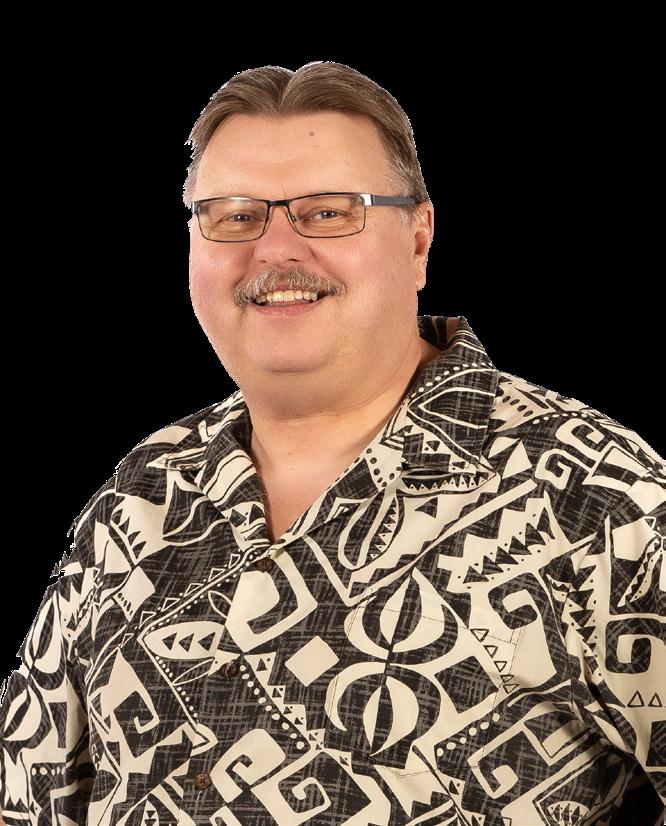
“OUR BUYERS ARE NOT TRADITIONALLY FIRST-TIME BUYERS AND THE PAYMENT REQUIREMENTS ARE DIFFERENT FOR RECREATIONAL PROPERTIES,” VANDASSELAAR SAYS.
“FOR MANY OF OUR BUYERS IT IS A SECOND PROPERTY, BUT WE ARE STARTING TO SEE A SHIFT OF MORE PEOPLE MOVING OUT HERE YEARROUND AS PRIMARY RESIDENCES.”ABOVE: KELVIN VANDASSELAAR, EDMONTON LAKE PROPERTY, RE/MAX REAL ESTATE.




“BASED ON RECENT SALES EQUITY, RECREATIONAL PROPERTIES IN THE EDMONTON AREA ARE SECURE AND SAFE INVESTMENTS. ALSO, WITH OPTIONS OF SHORT-TERM RENTAL PLATFORMS AND WITH THE SHORT TRAVEL TIME TO OUR CAPITAL CITY, THERE IS A SAFE REVENUE STREAM IF AN INVESTOR IS LOOKING AT LONGER TERM SECURED INCOME,” SAYS ANDERSON.
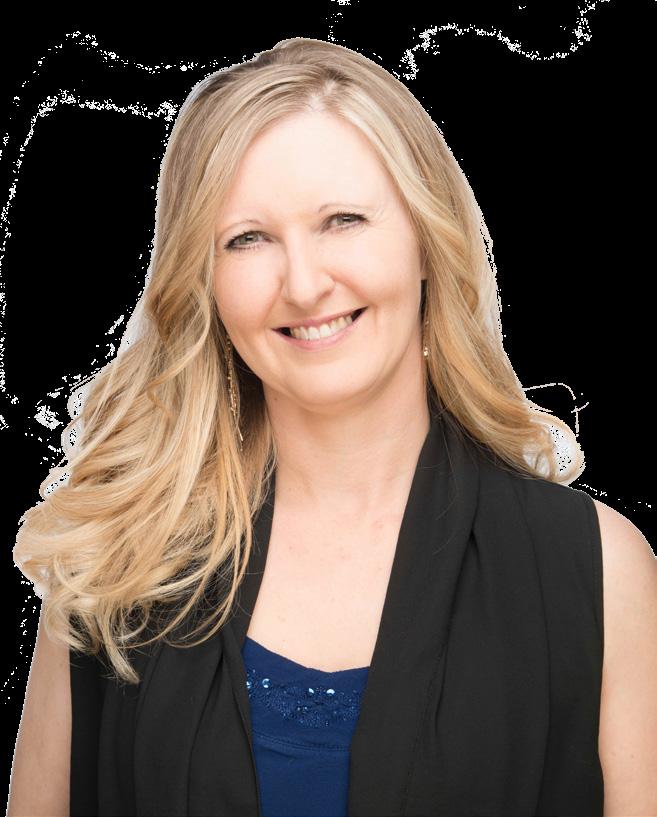
work-from-home, combined with a positive trend of inter-provincial migration into recreational markets as a primary place of residence, the demand for recreational properties, especially in desirable areas like Lac Ste. Anne, Lake Wabamun and Lac Isle, is likely to continue this year. Liveability and affordability will boost the trend.

Real estate trends, particularly in recreational property markets, indicate a significant shift; not only in values and activity but a noticeable shift in buyers. For many years Baby Boomer generation was the primary driving force behind the recreation property market. For various reasons, things have changed.
Generation X buyers (now in their 30s and 40s) are a factor in the market, now joined by Millennials in their late 20s and early 30s.
However, Edmonton’s recreational property positivity is laced with some prudent cautions about using these properties as speculative investments. Real estate experts advise against considering a quick flip investment strategy for recreational properties and they warn that it’s simply bad judgement to plan on an increase in value.
The projections underscore that, if a recreational property is ever considered as an investment, it must be considered a very long-term investment. Boomers who bought their cabin or cottage 10-15 years ago are not selling and considering that property as a legacy for their family.

According to numbers and past history, the majority of current recreational property owners plan to keep their properties longterm, with a majority stating that they are somewhat or very unlikely to sell their property, even at retirement.
Anderson emphasizes that, although recreational properties should only be considered as long-term investments, they are solid and secure investments.
“Based on recent sales equity, recreational properties in the Edmonton area are secure and safe investments. Also, with options of short-term rental platforms and with the short travel time to our capital city, there is a safe revenue stream if an investor is looking at longer term secured income.”
Real estate experts agree. Technology and two pandemicdisrupted years have impacted lifestyles in many ways, particularly the appeal of recreational properties. Some things have forever changed. The way we view our homes and our connection to community and nature has shifted.

JR. KINDERGARTEN TO GRADE 12

PERFORMING ARTS, VISUAL ARTS & TECHNOLOGY
We are committed to maintaining a caring and creative environment that fosters the natural curiosity to learn.
“Outstanding students, outstanding results.” proacad.ca
Some people have big dreams. Some have great vision. Some have a natural head for business. Herve Faucher has all three.
Faucher, GMS Aggregates Inc’s president and founder, saw an opportunity and watched for the right moment to grab it – even though that meant waiting for years. The results? A thriving gravel business with multiple pits offering a variety of products and services. But the story leading up to the company’s launch, what GMS and Faucher his partners do now and what both are going to do in the future is, pardon the pun, groundbreaking… and part of a much bigger picture. To understand why, we must go back in time.
It’s the 1970s. A young Faucher has just launched his first business fixing office equipment such as fax machines, typewriters and cash registers. Time moved on and so did technology, so Faucher expanded the business to sell office furniture and stationery. He would later sell the business to focus on insurance and then move into real estate.
“That is when I saw the gravel pit, when I was selling real estate,” says Faucher. “I decided to keep an eye on it.”
The gravel pit he came across was in northern Alberta, but the oilsands had yet to fully explode into its full potential. However, being a visionary, Faucher knew the pit had
incredible viability. All he had to do was wait; and wait he did, for more than 10 years.
With one eye on the pit and the developing oilsands up north, Faucher and his partners got busy with another venture. He opened two assisted living facilities in Calgary and operated them for 12 years.
In 2007 the gravel pit, and the timing, aligned. The opportunity arrived and Faucher grabbed it. Today, GMS Aggregates has grown to include three pits (Big Rock Quarry, Fort McMurray; Westlock Sand & Gravel Quarry, Clyde; Stone Bear Aggregates, Peace River). Products offered include base, concrete and specialty materials (treated winter sand, insulating rock, asphalt, etc.).
“We provide gravel needs for residential, commercial, industrial – everything,” says Faucher. “For lakeshore lots, sand for winter road safety, radon rocks for homebuilders, rocks for landscaping and riprap rocks to protect against water erosion. We are also increasingly providing the service of clearing farmers’ fields.”
For Faucher, the field clearing is a very special service.
“We clear quarters that have had rocks on them for more than 80 years. A rocky field produces lower yields so it is not ideal for crops or pastureland. Also, the rocks break
FAUCHER GIVES BACK IN BUSINESS, IN THE COMMUNITY AND AROUND THE WORLD

equipment. Modern combines have some rock protection but it is still easy to do tens of thousands of dollars in damage in seconds from a single large rock. It is worthwhile to have the fields cleared by GMS. This improves yield for crops, improves pasture lands and saves equipment. Successful farms are often generational. A service such as rock clearing helps farms improve profitability and remain as part of the family’s legacy.”
Providing radon rocks also has a bigger impact than many people realize.
Faucher explains, “Radon is a radioactive gas that forms naturally as uranium breaks down in rocks and soil. Too much radon exposure can damage your health and affect your lungs. Radon rocks are permeable so they help aerate the gas away from the building, break it down and prevent it from
settling in the lower level of a home. Everyone should consider including radon rocks when building or renovating. In fact, in Alberta the inclusion of radon rocks is now a requirement.”
From road safety to home safety, to opening farmland to preventing soil erosion, GMS Aggregates is making a difference across Alberta – but it’s not all smooth sailing. As seen with many companies operating in rural spaces, a growing problem is frustrating Faucher and his team.

“Theft.” Faucher shakes his head. “Right now, people are after the equipment, the trucks, the generators… they break into the sites and steal fuel and batteries. It’s very, very frustrating.”
While theft has always been a crime of opportunity due to the remote nature of the pits, Faucher has seen a noticeable uptick since last couple of years. In fact, the thieves have grown so bold of late, they have even snatched away a fuel tank.


“We had to steam clean the tank when we got it back. You can’t have any debris in it,” says Faucher. “It’s not just us. A lot of farmers and other businesses are affected right now. It’s big – and growing – problem driven by many factors, including the drug trade. It is escalating as now some of the thieves are carrying weapons.”
But he hasn’t been in business for decades without knowing how to overcome challenges. While the thefts are frustrating, Faucher and his teams at each pit have installed a variety of deterrents to keep the equipment in, the thieves out and their people safe.
“Trenches. Steel gates. Concrete blocks. Large rocks,” he lists some of the proactive measures. “So far it is working. Challenges are a part of the job. We figure out solutions, rise above and carry on.”
Rising above and carrying on is something Faucher has done all his life and in every business he has created. With his experience spanning retail, real estate, healthcare and aggregates, he has plenty of advice and wisdom to share. He does so as a director of the Goodfish Lake Business Corporation (GLBC) and as the chair of Alberta Enterprise Group (AEG). He was very proud when GLBC received the Alberta Business Award of Distinction in 2020 in recognition of all the work that employees, community members and leadership put into the business corporation.
Faucher discusses why he is so invested in the GLBC and AEG.
“It is very important, in business, to network and share with other companies and individuals. Together, we can start or grow businesses and everyone can help each other.”
“For example,” he continues, “Not many people know that GLBC has several different companies, including one that manufactures coveralls. It also has largest dry cleaning company in Northern America, where all the coveralls for camps like Syncrude and Suncor are cleaned.
“Through AEG, business leaders come together to talk and share solutions. AEG is big on advocacy and works closely with provincial and federal governments. No matter which party is in power at the time, we can connect and work with them.
Businesses of all sizes are encouraged to join Alberta Enterprise Group. This is an organization that connects Alberta’s business leaders with decision makers and stakeholders across the province. Get the “Alberta Advantage” with AEG’s networking, support and advocacy. Have an active role in influencing your own success and the success of other businesses in the province.
Interested in learning more? Start by attending an event; some are open to non-members. See upcoming events on the AEG website.
“At our AEG functions and meetings, we highly encourage networking. Personally, I have learned so much from the people I have met through AEG. Come to a meeting with a problem? You will leave with a solution. This is true no matter what business or industry you are in.”
Faucher truly has seen and done it all when it comes to business in Alberta. He has worked in several industries; successfully grown and sold several companies; sits on industry boards and gives back through volunteering, donating and supporting charitable events. With a birds-eye view of the business landscape that spans decades of growth and change, what is his take on the “Alberta Advantage?” Does the province still have “it?”
“Yes,” Faucher says firmly. “Absolutely. At times things are challenging and COVID was difficult for most businesses, including us, but Albertans are resilient. We see it all the time at AEG, how business owners are resilient and reliant.”
He points out just a few of the factors that prove this point. “As noted in Alberta’s Budget 2023 Economic Forecast, the province’s last two years of post-pandemic recovery have been robust. Our GDP is projected to grow by 2.8 per cent,
which will set the lead for the rest of Canada. Also expected to set the lead is our provincial oil and gas sector. This is on top of rising population growth, which will help alleviate the current labour job shortage. Alberta’s competitive tax rate and anticipated interest rate drops will attract more businesses to Alberta and increase consumer spending. Also, Alberta still has a relatively young population, which further adds to our workforce’s viability and to our province’s advantage and overall appeal.”
He’s a humble man, which is why not many people know that the man who fixed typewriters is also the man who waited nearly a decade to purchase a gravel pit with limitless potential. They don’t realize when they pass him on the street that he started a charity golf tournament that is still going strong after 20 years. Unless you were in attendance at high-profile events such as Canada Connects, you may
not recognize that he is a prolific speaker and advocate at conferences coast to coast. And unless you know him personally, you may not realize how many lives he has changed and how many he plans to change in the future.
“Our newest service with GMS, the rock picking business, is going to clean up as much agricultural land as possible so farmers can get better crops and improve their land. We are expanding what we learn here to work with developing countries to improve their land viability, agricultural systems and access to water. The more productive land is put to work anywhere in the world, the better it is for everyone involved,” Faucher smiles. “Change the land, change the world.”
He’s not done giving back either.
“My goal right now is to focus on increasing membership for AEG and bring more businesses in so we can all learn together, share and grow. We have trips planned to Washington, Montreal, Nevada and Ottawa. We will be visiting ports and factories, meeting the governments and having sessions with business owners. It’s all about sharing ideas and learning different ways of doing things.”
But that’s not all. He is very excited about another venture he and his business partners have underway. It’s Westgate Developments Ltd., which will oversee the development of commercial and residential property in Westlock.

That just leaves one question. How does he do it?
Faucher laughs, admitting that through it all he still has time to help out with the grandchildren and spend quality time with his friends and family.
“I’m passionate about what I do but the most important thing is to have integrity. If you say you are going to do something, do it. That is true if you promise to speak at a convention, take your granddaughter to dance class, deliver gravel to a client or show up at a charitable event. If you say it, make sure it happens.”
He gives his signature contagious grin as he concludes, “And yes, one does have to be very efficient in time management to handle it all.”
Learn more about GMS Aggregates at gmsaggregatesinc.ca, GLBC at gflbc.ca and AEG at albertaenterprisegroup.com.
It’s suddenly the hot topic and a threatening and scary fact of business life – the new risk management. Maddening, frustrating and, particularly for small and midsize businesses (SMBs), much more common and expensive than some realize or admit. What is it? Cybercrime and cybersecurity.

“A recent study by tech giant Bromium showed that cyber criminality platforms and a booming cybercrime economy resulted in USD $1.5 trillion in illicit profits, laundered, spent and re-invested by cyber criminals,” explains Kim Krushell, co-founder and EVP of Edmonton’s Treefort Technologies Inc., which continues to grow as a respected gold standard in digital ID technology in Canada.
“Cybercrime is a problem everywhere and Edmonton businesses are certainly not immune. According to
Edmonton Police, Edmontonians lost $55 million to various fraud crimes in 2022 and that’s not the full picture, because a lot of cybercrime is not reported.”

Tech experts and trends agree. Businesses are more aware than ever and cybersecurity has quickly become the new risk management priority. Cyber attacks are crimes of opportunity, laced with one aggravating fact: the more diligent businesses get about cybersecurity, the slicker and more evil the cyber criminals get and the more vulnerable and less protected the business remains.
MNP, one of Canada’s largest business advisory firms, has extensive experience advising business leaders and particularly SMBs about cyber security risks, trends and the crucial need to improve their resilience to attack.

At Butterfly Dreams Respite Care, our experienced caregivers are eager and ready to step in to provide compassionate assistance and necessary short-term support. We offer temporary respite services for older adults, including those with limited physical abilities and mild conditions like dementia, as well as individuals in need of post-operative recovery or hospital discharge care.
How long can you stay?
When planning for your loved ones stay you can choose between a minimum of 8 hours per day, overnight, daily or weekly services.
24 hour staffing and specialized support delivered by certified Health Care Aides and Licensed Practical Nurses. Services include but are not limited to personal care, medication assistance, cognitive therapeutics, wound care, meal services and social activities.

Fees vary by accommodation. Please contact us for further details.
Every day, computers around the world are under attack. Some are insignificant and quickly extinguished. Many aren’t. Data breaches and malicious attacks shut down power systems, disrupt television networks, target personal information and impact businesses of all sizes. Think you aren’t susceptible? Ask the FBI, who announced an intrusion in February.
The remote workforce and rapid technological advancements have made hacking easier. Mixing uncontrolled environments and human behaviour, which already account for 95% percent of security breaches, naturally introduces risk. You need the right team and the right systems to identify and defend against attacks. Off-the-shelf solutions like a basic antivirus are no longer enough. Modern threats have become much more sophisticated and complex.
“In 2021, there were 5.4 billion malware attacks and 623 million ransomware attacks,“ says Kris Wilkinson, CEO of SIRKit, a managed IT services provider based in Edmonton. “Small businesses are 3X more likely to be targeted. Many spend very little on security because they assume hackers are attracted to big companies. We need to stop assuming and look at the data as a society. Considering 60% of companies fold after a cyber-attack, it should not be taken lightly.”

According to a report from IBM, not only is the attack itself a concern, but the time to identify the breach is also alarming. For example, on average, a business email compromise took 234 days to identify and an additional 74 days to contain. To make matters worse, vulnerabilities in third-party software took, on average, 214 days to identify and 70 days to fix. Imagine the amount of information a third-party hacker could collect in over 200 days.
“A breach is just the start,” adds Wilkinson. “you need to sidetrack your IT team and potentially pull in expensive cyber-security experts, contact the authorities, recover from reputational damage with your clients, rebuild your systems, get your team back online, and hope that you’re not 6 out of 10 companies that cannot recover.”
According to Wilkinson, many companies still rely on one or two IT professionals who are stretched thin or lack expertise. Unfortunately, helpdesk is often the priority, and security becomes an afterthought until it’s too late.

Building a competent internal IT team often requires a minimum of 4 full-time staff with appropriate expertise and tools, and even then, the resulting service may be subpar. The world has changed, and unless you’re prepared for a significant investment, you should look at a reputable managed IT services provider.
Wilkinson.
With a world increasingly relying on digital systems, and having to protect against increasing attempts by those who want to compromise them, cyber-security must be a cornerstone of every company’s culture.
“The advantage of managed IT services is having a large experienced team at your disposal,” says
“You get instant and ongoing access to the latest information, best practices and enterprise systems required to monitor, maintain and support your team. This is especially important with regards to cyber-security.”
IT professionals are expected to support a constant stream of rapidly evolving technologies, help desk tickets, system upkeep, procurement and projects while defending your business against 5 billion malware attacks every year around the globe.
Effectively managing everything is extremely difficult for a small IT team with limited capacity and expertise. And when they can’t keep up, cyber-security and innovation fall behind. You can’t afford that risk when 60% of small businesses fold following a cyber attack.
We can help. With SIRKit, your business benefits from a large team, enterprise systems, expertise, refined process and advanced cyber-security protection that generally require decades of work and millions of dollars to establish and maintain. We immediately cover more than 15
technology roles that small teams can’t juggle or afford, including helpdesk, projects, security, network operations and CIO/CTO.
There’s a significant cost for an IT team and technology systems that don’t run efficiently. Losing just one minute per hour of productive time results in thousands of dollars lost per employee every year. Imagine if you were breached and offline for weeks?

Partnering with SIRKit’s award-winning service allows you to rapidly upgrade your IT team and leverage mature and robust technology services with no upfront investment.


Call us for a free consultation and infrastructure review.
Visit sirkit.ca to learn more 1-587-404-9002

Unless your IT team can multitask like this, you should reconsider your requirements.
• Identity Management. Many smaller businesses do not have multifactor authentication and employees too often use weak, easily guessable passwords, making it easier for cybercriminals to gain access to the business’ systems. Weak passwords are a notorious cause. Research indicates that 63 per cent of data breaches were caused by weak passwords, which take hackers seconds to crack.
• Email phishing is a common attack vector and one of the main sources of cyber crime. More than 90 per cent of all attacks start with a phishing email.
• Lack of backup and disaster recovery. Unfortunately, many SMBs do not have adequate backup and disaster recovery plans in place, making them victims for data loss and downtime.
Krushell urges effective and updated cybersecurity management. “The undeniable fact is that cyber attacks are increasing, not decreasing. The best way to reduce a business’ vulnerability is by ensuring all employees are provided with cybercrime education and training.”
IT analysts and consultants are reluctant to imply that big corporations are better protected from cyber attacks than SMBs but the business bottom line suggests that SMBs often have limited resources to invest in security, leaving them more susceptible.
“Cybercriminals target everything from SMBs to hospitals, to targeting homeowners and committing mortgage fraud,” she points out. “I would suggest that small businesses are more at risk because they often cannot afford the type of cybersecurity prevention and controls that a large company would invest in, so they are an easier target for cybercriminals to attack.”
The alarm bells are ringing for SMBs’ owners and managers. Seven in 10 SMBs are more concerned than ever about cyberattacks, according to a recent joint survey from the Canadian Federation of Independent Business (CFIB), Canada’s largest association of small and medium-sized businesses with 95,000 members across every industry and region.
“The last two years saw a huge number of small businesses increase the amount of business they are doing online, which has many benefits but also introduces new risks,”
ACCORDING TO THE SURVEY, ONE IN FOUR SMALL BUSINESS OWNERS REPORTED AN INCREASE IN CYBERATTACK ATTEMPTS AGAINST THEIR BUSINESSES IN THE PAST YEAR AND 8 PER CENT OF SMBS WERE VICTIMS OF A CYBERATTACK THAT COST TIME, MONEY AND USUALLY BOTH.
says Laura Jones, executive vice president of CFIB. “It’s critical to make it easy for business owners to protect themselves in this new environment.”
According to the survey, one in four small business owners reported an increase in cyberattack attempts against their businesses in the past year and 8 per cent of SMBs were victims of a cyberattack that cost time, money and usually both.
“To protect against threats from within, SMBs should invest in cybersecurity training for employees,” McLaughlin suggests. “The training should include the importance of using strong passwords, spotting phishing emails and establishing clear policies describing how to handle and protect customer information and other company data.”
IT experts offer a vexing reality check. The cybersecurity bottom line is that, due to the growing frequency, sophistication and magnitude of cybercrime events, it is more and more difficult to foolproof a business from hacks and cyber attacks.
“Now that the genie is out of the bottle, I do not think we can turn back the clock and reduce cybercrime by getting people to stop remote working,” Krushell, says with blunt conviction. “We must focus on educating businesses and workers about the many efficient and effective things people can do to protect themselves.”









While art imitating life doesn’t usually translate into the world of business, the latest TV season of Succession, about the scripted maneuverings and vicious shrapnel of Logan, Kendall, Roman, Shiv and the rest of the fictitious Waystar Royco family, may trigger more mundane but important interest about the critical issue of real business succession.
In many ways, and for various contemporary business reasons, succession planning experts are sounding an alarm about avoiding the disaster of procrastination or not succession planning at all. They candidly but bluntly urge Edmonton business owners and executives into action, warning that, in some situations, failing to plan translates into planning to fail. Reality warns that making no plan is also a decision. A risky and poor decision. Some recent Canadian business trends and figures make the decision even more critical.
• Some 76 per cent of Canada’s business owners plan to exit their business within the next decade, with a potential of over $2 trillion worth of business assets that could change hands.
• Only 1 in 10 business owners (9 per cent) have a formal business succession plan in place to ensure a smooth transition.
Trends and specific case stories echo the cause and effect that, without succession planning, a successful business is courting disaster. There is an urgent checklist of risks and consequences:
4 Owners failing to realize the full value of their business.
4 Alienating potential successors (senior management, family or outsiders).








4 Inability to achieve the mission and realize the vision, putting the business at risk.
4 Increased difficulty in obtaining long-term financing if lenders perceive inadequate business planning.
Succession planning usually means ownership transition. David Bentall, an author and family business advisor, coined the phrase “Tax efficient asset transfer” to better describe the traditional process that was referred to as succession planning, however the ownership transition is only one component of the plan.


Succession planning is a process that every business owner should consider, regardless of the size of their business. It is a comprehensive plan that outlines the steps and strategies to ensure the smooth transition and when done effectively, can increase the value leading into a sale. A well thought out process can take a minimum of two years to implement and so it is best to start 3-5 years before the planned transition.
A succession plan should start with a determination of the business’ value. It will allow for the creation of an accurate and detailed plan that outlines how the transition will occur, including tax implications and financial considerations. Upon implementation of the plan, there is a potential that the business will be even more valuable than when the planning process began.
Next, it is crucial to have a comprehensive tax plan in place. This plan should consider both the tax implications of transferring ownership of the business, as well as the tax implications of any changes in the structure of the business. The plan can help to ensure that the after-tax proceeds are as large as possible while minimizing taxes.

Restructuring the business may also be necessary to ensure a smooth transition. This goes hand in hand with the tax planning. Corporate
restructuring may involve the addition of holding companies, family trusts and the separation of assets from the operating company. It is where a business owner may look to multiply the capital gains exemption, strip out assets that should not be part of the sale and ensure the operating company has been “purified” to meet certain income tax requirements to access the Capital Gains Exemption where possible.

The tax planning and corporate structure steps are the ones Mr. Bentall referred to as Tax Efficient Asset Transfer. With the focus on strictly corporate structure and income tax, the ability to truly increase the value of the business and its future success is limited. The final two steps
 Shabir Ladha Mark Kuzyk CPA, CBV | Senior Manager
Aman Perhar CPA, CA, CBV | Partner
Tony Edgington CPA, CA | Partner
Shabir Ladha Mark Kuzyk CPA, CBV | Senior Manager
Aman Perhar CPA, CA, CBV | Partner
Tony Edgington CPA, CA | Partner
are the areas that can significantly increase the business value and the number of potential buyers allowing for competitive bidding, more options for the seller and ultimately a higher price.
Another critical aspect of succession planning is documenting systems and processes. This involves creating clear and concise documentation of all aspects of the business’ policies, procedures, and workflows. By properly documenting processes and procedures, current management can identify areas for improvement, review areas of inefficiency and reduce significant risks. Taking the time to address these areas and finding other areas of improvement can help make the business more profitable and operate more effectively. These changes will often translate into a higher valuation and can have a significant effect on the selling price of the business.
The final portion of any succession plan must involve ensuring that a competent management team is in place who are knowledgeable about the business and its operations, and who have the necessary skills to lead the company into the future. When management is dominated by the owner(s) a buyer will either need to step into this role or hire additional individuals, thereby reducing profitability of the business. If ownership is separated from management, then the potential buyers can include those who simply want to invest in a well-run business.
As part of the planning for the management team, it is essential to ensure that the goodwill of the business is not all in the hands of the owner. Often when businesses launch, the owner(s) are the ones doing everything. They have all the key relationships with suppliers, customers and other stakeholders. The business would not survive without them.
The management transition as well as the documentation of processes and procedures will pull the goodwill from the hands of the owner(s) and move it into the business itself. When goodwill is in the business the value of a business increases significantly, as does the list of potential buyers.
The final step in the succession planning process may be to update the valuation. If the above steps have been successfully implemented, a significant increase in value should arise and the business becomes more attractive to prospective buyers.
Whether the transition of the business is to an unrelated third party, the next generation in the family or anyone else, the steps outlined above do not change.
Many business owners have spent their entire lives building their business. By taking the time to plan the succession, the owners can ensure the legacy continues, the employees remain with the business, the new owners are successful in their purchase, their tax bill is as low as possible, and the selling price is as high as possible. The lack of proper succession planning can have serious consequences for businesses. Do not wait until it is too late - start planning for succession today.

4 Loss of expertise and knowledge about the business.
4 Leadership gaps and loss of continuity and naming an unprepared or unqualified successor who lacks personal drive, commitment, skills, training and education.
4 The owner taking a significant tax hit.
4 Damaged client and partnership relationships.
4 Uncertainty for staff and potential of low morale. Some succession planning experts go as far as to warn that not having a plan is dangerous, risky and irresponsible. They point out that succession planning IS risk management in its most urgent and important form.
Of course, the most basic and obvious risk is that the business goes downhill, really fast. In many specific situations, the business has grown partly due to a leader’s experience, drive and ability. Without proper succession planning and strategy, the future success of the business deteriorates when the leader’s experience, drive and ability are gone.
When the experienced leader goes, the business suffers and triggers lower productivity, lost work, a slump in business and low morale, which causes lower quality of work. In many ways, succession planning is a matter of avoiding risks.
Experts suggest that a business’ financial risk increase exponentially without the buffer of a succession plan. The impact of a sudden departure or crisis for a key leadership role or mission-critical position is significant and could cause disruption to the business and financial damage. It is a notorious fact of business life that investors scare easily and often react to a change at the top by assuming the worst.
Some impact of business disruption includes issues such as suspended initiatives, disrupted third-party/partner relationships, poor financial performance, loss of revenue or shares and more. There is a lot of uncertainty and turbulence posed by a sudden vacancy/departure of a key position within the organisation.
While business growth, revenues and cash flow are key factors, stats show that most owners rely on the sale of the business as a source of retirement income. Not having a plan
can reduce their chances of selling at the price they want. That means lower retirement funds.
Obstacles encountered by the owner looking to sell the business may not only be problematic to the business itself, but the well-being of the owner and their family. Failing to plan also puts the employees’ livelihoods in jeopardy, on top of all the other risks.
Deferring or putting succession planning on the back burner is much too common and an easy to do, with the most familiar excuse that “we’re all way too busy, and there are other pressing priorities.”
The Canadian Federation of Independent Business (CFIB), Canada’s champion of small and medium businesses (SMBs), is a dynamic advocate of succession planning. Regardless, its recent Business Succession Planning Survey acknowledged that some small business owners do procrastinate.
“Succession planning is a complicated process and, for one in four owners, it’s hard to know where to start,” explains Laure-Anna Bomal, CFIB’s research analyst. “Also, when planning does start, there are other obstacles.”
• 75 per cent of SMB owners will leave their business for retirement, while 22 per cent will leave because of stress; 21 per cent just to step back from their responsibilities as owners.
• 54 per cent say finding a suitable buyer is the most common obstacle to succession planning, followed closely by business valuation and reliance on the owner for day-to-day operations.
“Given the magnitude and complexity of the process, business owners may also be too busy running their business, do not have the time needed and may avoid or postpone any plans,” Bomal says.
Despite the cliché that “it’s business, not personal,” many succession planners warn that the personal, family aspects can be sensitive speedbumps.
“Handing over a family business to the next generation, especially the first succession, is make or break time for most family-run businesses,” cautions Deborah A. MacPherson, partner, KPMG, Tax Business Unit Leader, Regions West. “It doesn’t matter how successful a family business is in one generation if it isn’t able to effectively transfer
Business succession planning can unlock the power of strategic generosity and make a meaningful impact in your community while also optimizing your tax benefits.

Did you know that most small and mid-sized businesses in Canada are owned by individuals over fifty? This means that within the next 10-20 years, many of these businesses will experience an ownership transition due to life events such as:
• Retirement
• Transitioning a younger family member to the business
• A disability or illness
• The passing of an existing owner
Transition is inevitable for every business sooner or later. This is why a well-drafted succession plan is important for providing the necessary stability for a business to continue to succeed. Introducing generosity into succession planning can be a powerful way to support the achievement of a business’s philanthropic goals.
Many business owners give to charity on a regular basis, either personally or through their business. However, charitable giving is often overlooked when it comes to succession planning. It might be forgotten in the rush of enacting a last-minute succession plan, as there are usually many other pressing issues to deal with, or it could be that the professional advisors involved may not be aware of your charitable intentions. This is why it is important to proactively discuss your charitable giving plans with your advisors when designing a succession plan that can be incorporated into your overall business strategy. When done right, this will maximize the opportunities to support the charities that matter most to you while also ensuring that you do so in the most tax e cient manner.
There are several options when considering charitable giving in your succession plan. You can donate di erent types of assets, such as:
• Cash
• Private company shares
• Publicly traded securities
• Life insurance.
Of course, each situation is unique, and the best strategy will depend on your business ownership structure before and after the succession plan, as well as assets held personally and in the business. Abundance Canada is here to help you design a personalized Generosity Plan™ that fits into your overall succession plan strategy.
Working with your professional advisors, a gift planning consultant at Abundance Canada will provide valuable input regarding:
• The type of assets that can be donated
• The timing of these donations
• When the donated assets will be converted to cash. Donations can be timed to align with taxable events resulting from the implementation of your succession plan.
Some business owners use their succession plan as an opportunity to establish a private family foundation, allowing their family to actively participate in their philanthropy. A Generosity Plan™ at Abundance Canada can be created to provide the same benefits as a private family foundation (with fewer administrative responsibilities and more anonymity for the family).
All businesses, no matter the size or complexity, require some sort of succession plan. As you consider possible scenarios for transitioning your business and develop a plan to address them, don’t forget that charitable giving is another “what-if” well worth considering.
Abundance Canada is a public foundation that o ers Donor Advised Funds (DAF). For nearly 50 years, we have worked with individuals and business owners with tax-e cient charitable giving. To find out more about creating a Generosity Plan™ to complement your succession strategy, or if you’d like to know more about the tax e ciency of the various gift planning options available to you, visit abundance.ca or call 1.800.772.3257 to speak with a gift planning consultant today.
Introducing generosity into succession planning can be a powerful way to support the achievement of a business’s philanthropic goals.
that momentum to the next generation. Without a good succession plan in place, each time the business passes into the hands of the next generation, it could face failure, no matter how well it was doing previously.”

Regardless of size and the nature of the business, MacPherson cites the Canadian business stats that underscore cold, hard and indisputable family business risks and trends.
• Fewer than 30 per cent of family businesses survive into the second generation.
• 12 per cent are still viable into the third generation.
• Maybe 3 per cent of family businesses are still in business by the fourth generation or beyond.
Research and volumes of specific, individual family business details show that many family business failures are
invariably traceable to one underlying and common factor: a lack of calm and carefully thought out family business succession planning.
While most consultants and analysts stress the importance and urgency of succession planning, they are reluctant to put all the blame on the leader. Recent stats and surveys illustrate the failure or lack of succession planning as often due to boards and stakeholders allowing it to fall off their priority or agenda.
There are also other challenges, such as the lack of a structured process, ambiguity of accountability for succession planning, decision-making based on gut-feel over objective data, and other factors. According to the CFIB survey, and unlike the fictionalized scandals and infighting of TV’s Succession family, real families are not such significant speedbumps in real success planning.
Predictable Futures helps private companies navigate the challenges that come with transition and succession. We provide a proven process that covers off issues of leadership, ownership, business and family that can come up along the way.
For over 35 years, we have guided business owners successfully through transitions, enhancing the value of their companies while protecting the family and other stakeholders. It’s what we love to do.

-1 Truss has been designing, manufacturing and delivering custom building supplies in Alberta for the past 30 years. The company also engineers flooring systems (I-joist, open web, POSI-STRUT®), LSL tall walls and stairs. Stateof-the-art automation, a team with decades of experience and outstanding leadership have ensured the success of this company for the past 30 years; and the best is yet to come.
Gagan Dhaliwal, CEO, says, “A-1 Truss is a dedicated partner and an experienced provider of residential and commercial construction building supplies for all sizes of projects across Alberta and


He discusses the company’s origins, “My father, Mohan Dhaliwal, was a framing carpenter in the late 1980s and at that time, he envisioned the opportunity for a more efficient and automated process to build engineered trusses. In 1993, he incorporated and started the A-1 Truss production facility to supply the growing housing market with high quality service and products.
From opening day, A-1 Truss began building relationships and setting the foundation for the future through integrity, honesty, customer service and good old fashioned hard work.
Gagan Dhaliwal, CEO.Dhaliwal continues, “In 2005 our family purchased equity from other stakeholders for greater control of our supply chain and increasing market share. In 2007 I joined the business full-time to support growing the company as we completed more projects and gained new partners. In 2008 we added to our product line to include engineered floor systems. We built a new facility in 2011 to enhance our manufacturing timelines and optimize costs. In 2017 we added construction stairs to our product line.”
When Dhaliwal became the CEO of the company, he expanded operations into offering their builder partners lumber packages along with the engineered products. This was to adapt to the ever-evolving industry’s demands and preferences.



In addition to innovative products and services, Dhaliwal credits consistent and exceptional customer service as one of the reasons behind A-1 Truss’ success.

“My father always taught me that our clients come first. Our relationships are of utmost priority to us and our team works 24-7 to ensure we stand out from the competition.”
He notes that the way they structured their facility and run their operations also empowers the organization’s success.
We’ve seen our share of both, and it has only made our partnership stronger. Taiga Building Products would like to congratulate A-1 Truss on 30 years of service to the building industry in Alberta and beyond.
“There are plenty of healthy competitors in the building supply industry that offer similar products and services. Our agile size and state-of-the-art facilities allow us to price ourselves effectively in the market while our white-glove service takes care of the rest.”
Dhaliwal is honoured to help build the province, and beyond, with a local, family-owned and operated business.





HERE’S TO 30 MORE!!

11224 – 184th Street Edmonton AB, T5S 2S6 WWW.GF.CA
CONGRATULATIONS
“We are proud to be an Alberta-based and family-owned company,” he smiles. “We’ve had the ability to grow with our clients. It’s been such a remarkable experience to have supplied builder partners with their first truss and floor package and then seeing them years later building 200+ homes a year. As we’ve been expanding our business, we have started serving markets outside of Alberta including in Kelowna and the Okanagan. Additionally, being able to work side by side with my family to grow the company has been one of the most rewarding things I have ever experienced. I started working with my parents and grandparents and now I work alongside my wife. I am trying my best to encourage both of my children to join the business one day. Of course, they may have other plans!”

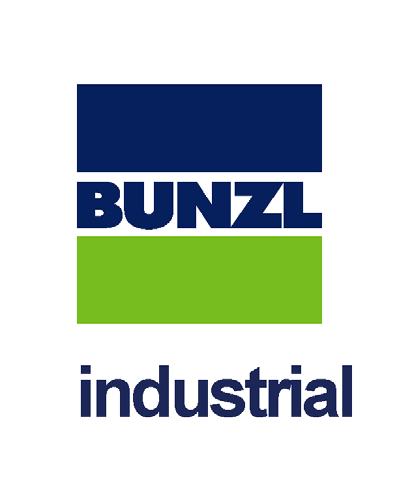
maderaforestproducts.ca
“I have always looked up to my father and grandfather for their hard work and passion for the industry. As a kid I used to follow my dad around and learn the daily logistics and in later years, I started by working in the manufacturing plant building trusses. My father wanted me to learn the roles and responsibilities from the ground up. He wanted to ensure that I understood all aspects of the business including manufacturing, design, sales, customer service and management to be successful. I started off as a labourer in the shop and over time, worked my way up through the organization, learning on the go.”
From its humble beginnings 30 years ago, A-1 Truss is now well known in the industry for providing building supplies built to custom specifications. No matter the type, size or style of roof truss, A-1 Truss can make and deliver it. This includes trusses for residential, commercial and industrial projects. The I-joists they supply for floor systems are known for exceptional performance and for resisting warps, twists, shrinkage and squeaking. The open web floor trusses are designed to be easily installed around other building elements, such as plumbing, electrical and HVAC. The open web floor is delivered as a customized product; no cutting has to take place on the job site. As no joist hangers are required


either, project managers enjoy significant cost savings when using this product from A-1 Truss. Builders also love the lightweight POSI-STRUT® floor system that, once again, arrives precut and ready to quickly install. Having products like LSL tall wall studs provides cost savings and value, while A-1 Truss’ construction grade stairs allow for an expanded one-stop shop.
A-1 Truss has completed numerous projects in Alberta and British Columbia and has collaborated with many industry partners locally, provincially and nationally.

“We supplied two large-scale custom commercial projects floor and roof trusses in 2022/2023 in Edmonton, and we have partnered with BarrierTek to provide our clients with fire resistant coating on both the engineered floor system and roof trusses to meet all standardized fire rating needs. We do this while exceeding client expectations and working together with industry partners in a coordinated effort for timely delivery and exceptional quality,” says Dhaliwal.
You’ll find A-1 Truss’ products across the city, but the team is just as prevalent in the community in other ways. They support a wide range of charities in Edmonton and the surrounding area. Just a few examples include ongoing support of the Stollery Children’s Hospital Foundation, Alberta Cancer Foundation, Edmonton’s Food Bank and several local amateur sports teams.
“The Edmonton business community, especially in our industry, is as big as the hearts of the people that live and work in it,” says Dhaliwal. “We have made tremendously important connections that have shaped and changed our company for the better. There are always supporters and
competitors to keep you motivated and there’s always an opportunity to learn from others.”
To A-1 Truss’ many clients over the past three decades, he says, “Thank you for all your support and trust after all these years. We wouldn’t be where we are without you and we are grateful to grow alongside you.”
While A-1 is battling the supply shortage issue that many manufacturers have faced since COVID, the future looks bright as Dhaliwal and his team have a plan in place to address the current challenge.

“To offer more options to our clients, we are expanding our product line once again and will have the ability to supply our clients with full lumber packages. Also, we are planning construction on a new 40,000 square foot manufacturing plant in 2023.”


Nothing can keep A-1 Truss from rising to the occasion. Learn more online and follow their growth, collaborations and projects by subscribing to their feeds on Facebook, Instagram and LinkedIn.

Board Executive Chair: Haydar Al Dahhan
President and CEO, Design Works Engineering
Vice-Chair: Aziz Bootwala
Managing Principal, Edmonton, Vice President, Business Development, Kasian Architecture Interior Design and Planning Ltd.
Secretary-Treasurer: Jason Pincock
CEO, DynaLIFE Medical Labs
Past Chair: Dennis R. Schmidt
Principal, ALTURA Legal Advisory
Board Directors
Nicole Bird
Owner, Rsvp Design Inc.
Nathan Carter
Vice President, Projects and Construction, ATCO Energy Solutions
Jonathan Gallo Managing Partner, Gallo LLP Chartered Professional Accountants
Sandy Jacobson
Vice President, Richardson Executive Search
Sam Kemble
Chief Operating Officer, Workforce Delivery Inc.
Annemarie Petrov President and CEO, Francis Winspear Centre for Music
Amir Shami President and CEO, Rotaflow
Celia Wanderley
Chief Customer Officer and Head of AltaML Invent, AltaML
Randy Allaire Chief Risk Officer, Servus Credit Union
Edmonton Chamber Executive Cadence Bergman Director, Policy
Alexandra Hryciw Director, Strategy and External Affairs
Bobbi Elliott Executive Director, Finance and Operations
Amin Samji Director, Member Services
Contact Edmonton Chamber of Commerce #600 World Trade Centre 9990 Jasper Ave, Edmonton, AB T5J 1P7 T: 780.426.4620 | F: 780.424.7946 edmontonchamber.com

The Edmonton Chamber of Commerce had four key areas it wanted to see addressed in the provincial budget, including responsible fiscal management, improving community safety and wellbeing, skills development and labour attraction as well as investments in innovation and diversification. While not every recommendation was addressed, each of these themes featured prominently.
FISCAL MANAGEMENT
Budget 2023 is balanced, with a surplus of $2.4 billion this year and projected surpluses of $2 billion in fiscal 2024-25 and $1.4 billion in fiscal 2025-26. How those surpluses are to be used has also been laid out. The government will introduce new fiscal framework legislation that mandates balanced budgets, with exceptions for a sharp decline in government revenues or unexpected disaster costs. Year-overyear spending increases will be limited to population growth and inflation, and 50 percent of future surpluses will be mandated to pay down debt maturing in that fiscal year. The rest of future surpluses will flow into a newly created Alberta Fund which can be used to pay down debt, invest in the Alberta Heritage Savings Trust Fund, or be used for one time spending initiatives that won’t lead to a permanent increase in government spending.
That’s not to say there aren’t spending increases in this budget. Healthcare spending has increased by 4.1 per cent to $24.5 billion. Education funding is increasing to hire up to 3000 education staff, including teachers and educational assistants.
Attracting investment into Alberta remains a key theme in this budget. The government is introducing a 12 per cent non-refundable tax credit for corporations investing $10 million, or more, to build or expand agri-processing facilities in the province. The Alberta Petrochemicals Incentive Program will see an increase of $54 million per year starting in 2025.
The budget includes $100 million over three years for the Film and Television Tax Credit and a $24.5 million commitment this year for the Alberta Technology and Innovation Strategy. On connectivity, budget 2023 invests $369 million investment over three years for Alberta’s Broadband Strategy to ensure families and businesses in rural and remote communities can thrive.
Capital spending in Edmonton includes $760 million over three years for LRT expansion for the Yellowhead and Terwillegar Drive projects, support for affordable transit and money to eliminate the at-grade rail crossing on 50th Street. There’s also $634 million over three years for the new hospital on the south side.
There’s a continuation of the Alberta at Work initiative to help address labour shortages in key economic sectors, including the extension of the program with a $176 million investment in 2025. There’s also a funding increase of $111 million over three years to open more seats for high demand programs at post secondary institutions, and an investment of $35 million for MacEwan University’s new School of Business building.
Continued on next page

IMPROVING COMMUNITY SAFETY AND WELLBEING
On public safety, the government is investing $709 million this year including investments in recovery communities, as well as harm reduction and recovery outreach teams in Edmonton and Calgary. Mental health and addictions supports and services will become a key component of community policing and the corrections system.
We look forward to continuing our advocacy on behalf of our members, our policy committees and the broader business community.
Lola Olorunfemi, Owner/CEO www.beautydiamondmedispa.ca

What’s your story?
During the pandemic, I was a nurse educator at the University teaching Nursing. I saw and felt the direct impact of COVID on frontline staff, patients, families, caregivers, teachers and the entire population. As a nurse on the frontline I found I had no outlet for caring and rejuvenating my mind. I needed healing and relaxation, but there was no place to go. Juggling the different roles as a frontline health worker, educator impacting knowledge, wife, and mother, I didn’t have an outlet to fill my cup so I could care for those who came to me. Beauty Diamond Medical Aesthetics was born out of this. It is a brand aimed to help everyone step back, relax, recharge, and rejuvenate their minds, body, and soul. The brand provides a holistic approach to well-being.
What do you enjoy most about joining the Edmonton Chamber of Commerce?
I have enjoyed the networking and connections I have made with the members and the help of Chamber staff is unparalleled. They are very supportive as well.
What is one thing people are surprised to learn about your business?
The one thing would be that it’s NOT a regular SPA; it offers aesthetics services that only nurses, nurse practitioners, and doctors offer like Botox, fillers, IV therapy, hair rejuvenation and restoration, soft surgery, non-surgical blepharoplasty, mole and skin tag removal and more.
Who is your ideal client?
A client who is invested in their well-being and overall health. Who would like to age gracefully and can afford monthly or bimonthly self-care.
What has been your biggest challenge in business, and how did you overcome it?
Marketing and education of clientele. Education and follow-up are key. That has been incorporated into my practice. Still need more marketing and getting the word out there.
What is your favorite thing to do in Edmonton? Community and networking.
If you could make one substantial improvement to Edmonton’s business environment, what would it be?
Exposure to the world economy and women empowerment.
SDI Group has offered health and safety services and products to businesses across North America for the last 20 years.
The Group consists of four divisions: partnership consulting and COR auditing, occupational screening, occupational hygiene and industrial cleaning. The SDI Mobile division supports all of the health services. The team also offers classroom and online training. Under these divisions, a wide variety of other services are offered, which include but are not limited to quality management systems, function fitness evaluation, drug and alcohol testing, audiometric testing, noise assessments and drinking water safety plans.
David Williamson, the founder of SDI Group, recognized a need for providing a different approach to health and safety as a way to enhance businesses, instead of safety being seen as a hindrance or simply something that is required. Knowing that health and safety can empower a more productive workforce, help combat dangerous situations on the job and even saves lives, he set out to make a difference.
“SDI Group started as Williamson and Safety Services in 1998 but was formally introduced under the current name in 2003,” he says. “We offer specialized services in partnership with our clients to find solutions that meet non-traditional needs. We empower health and safety through innovation and provide pathways to success to all we serve. We were proud to introduce our Indigenous company, SDI Mobile, in 2019 and now couldn’t be happier to celebrate 20 years as a business. Personally, I am celebrating 25 years as a health and safety professional and 18 years as a CRSP (Canadian Registered Safety Professional).”
He continues, “We have achieved many milestones over the years in partnership with our clients. One that comes to mind is building and implementing our first formal health and safety management systems for The Town of Tofield and the Town of Viking, which included achieving a Certificate of Recognition in health and safety (COR). The Town Tofield received the Alberta Worksafe award as a result.”
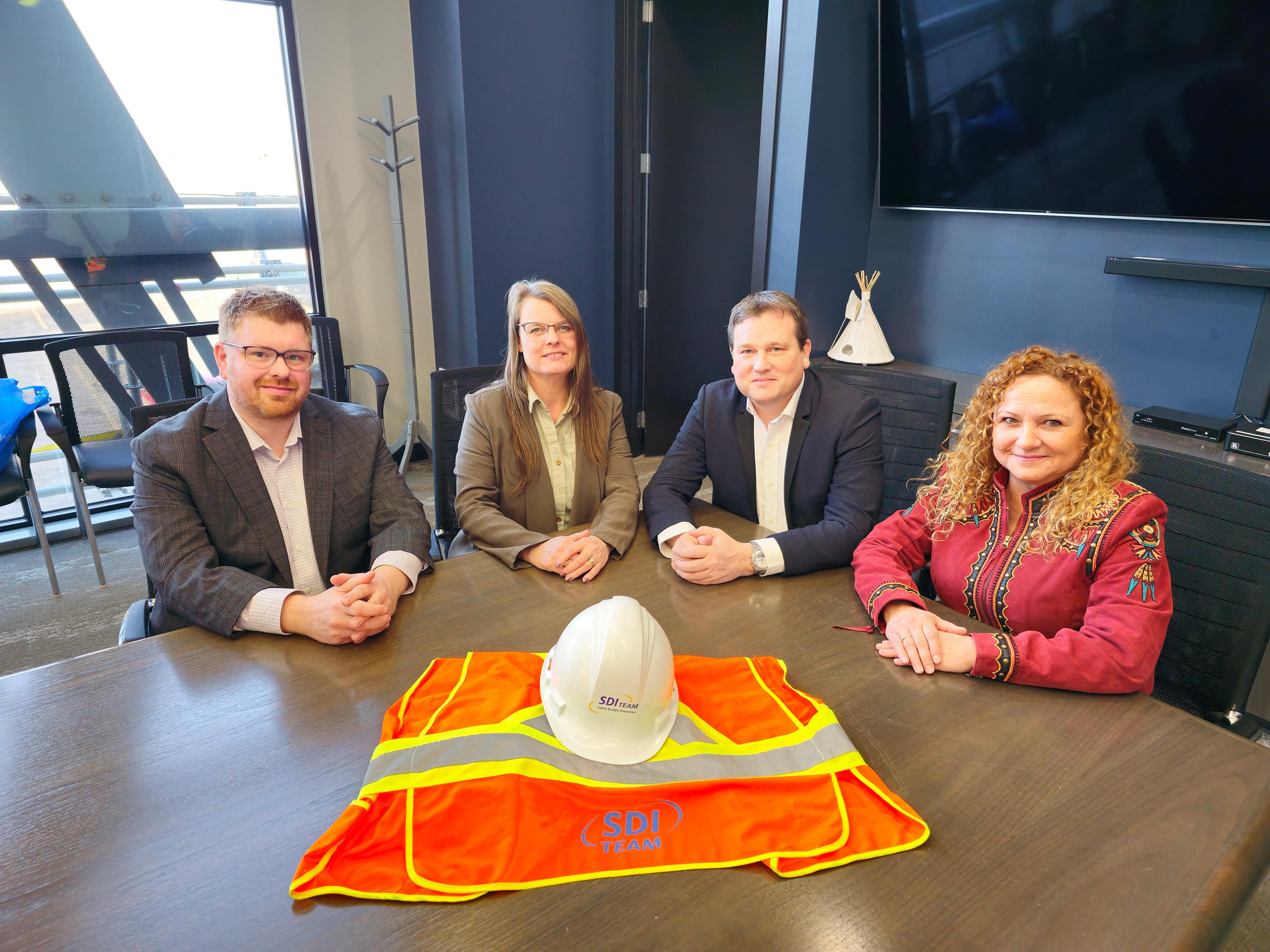
Williamson is very proud with the Indigenous partnerships the company has formed with local Nations. Williamson founded SDI Mobile with Ms. Rosalie Gray, a First Nation member of the Enoch Cree Nation. SDI Group is proud to be partners with the Enoch Cree Nation, Alexander First Nation, Maskwacîs Education School Commission and the Kee Tas Kee Now Tribal Council Authority.
“We are dedicated to creating a workplace that is inclusive and honouring of Indigenous Peoples’ history, culture and heritage,” says Williamson. “SDI Group recognizes
First Nations, Inuit and Métis Indigenous rights under the Constitution of Canada and respects Nations’ connection with the land and its natural resources.”
Along with community and business partnerships, Williamson credits innovation as a driver of SDI Group’s success.
“One of our greatest strengths comes from our title of Safety Designs Innovation. We are constantly innovating to provide our clients and partners with the best solutions that fit their business models. We understand the challenges businesses have today. This is why SDI Group was created, to provide trusted support to meet our clients’ health and safety needs.”
He enjoys helping clients succeed but is just as invested in his team.
“We have had many memorable moments. A key one that stands out for me is watching staff write and achieve their CRSP (Canadian Registered Safety Professional) exams, which is the highest designation in our profession. Other moments include our team achieving audiometric and auditing certification. Other notable ones are working with our partners and watching their health and safety systems grow from a written process into implementation. We are also proud of our over 150 partnerships that have grown over the years,” smiles Williamson.
Although there have been many successes and rapid growth over the past 20 years, there have also been challenges to overcome.
Williamson admits, “Our profession, at times, is not easy but I believe a true health and safety professional possesses the ability to critically think and focus on what our clients and partners need in order to tie in with their business model. We also, at times, must deal with very serious health and safety situations. However, this is why we have the
Canadian Registered Safety Professional (CRSP®)
A CRSP® applies broad based safety knowledge to analyze and develop systems that will achieve optimum control over hazards and exposures detrimental to people, equipment, material and the environment. A CRSP® is dedicated to the principles of loss control, incident prevention and environmental protection as demonstrated by their daily activities.
Canadian Registered Safety Technician (CRST®)
A CRST® supports a safe working environment by maintaining OHS administrative processes, conducting training and using a range of state-of-the-art tools, processes and common practice solutions to occupational health and safety risks. They oversee and drive monitoring and compliance in relation to technical and behavioral risk controls.

Canadian

Overcoming challenges makes SDI Group stronger and more agile; Williamson finds many joys alongside the challenges of the business.



“Watching our company grow with our team and partners is very rewarding. We work with several companies that started out small and have now grown significantly. We are very proud to be a part of that.”
As a provider of many services, a lot of what SDI Group does in the community flies under the consumers’ radar. On any given day SDI professionals are training, conducting occupational screenings or doing occupational hygiene and partnership consulting at the same time. The end users of the companies they serve, and the teams within those companies, are presented with the solutions they need that empowers customer facing


At Jade Transport, we know that shipping liquids is complex and dangerous. We are passionate about seeing each load delivered safely and in a polished manner. Because we believe when liquids are handled properly, the world is a safer place.



service. What goes on behind the scenes with SDI Group providing support is what enables a lot of production and client service to happen at high efficiency levels.


“It is important for industry leaders and entrepreneurs to know that health and safety can actually enhance and grow their business on top of ensuring their workforce remains healthy and safe,” Williamson points out. “By working in so many different industries, we have deep insights into how other businesses operate, including learning from their leadership groups. This, in turn, empowers us to offer even more efficient, customized services for our clients.”
Over the past few years, SDI Group has seen its health services grow in demand. Williamson says, “Our partnership consulting has always been one of our greatest strengths, as our clients get an entire team to support their health and safety management system.”

Investing in the communities they serve is a value of SDI Group. Over the years, the Group has supported numerous charities and causes including Food Banks, Stollery Children’s Hospital Foundation, Canadian Mental Health Association and many more.
“We are quite proud to be working with the NAIT co-op program, providing mentorships for the future of health and safety for the last 13 years,” Williamson adds.
As he reflects on 20 years gone by and the many years ahead, Williamson says thank you to a number of supporters. “We have a multitude of partnerships that have contributed to our success. I am also thankful to our team at SDI and in particular, our first employee Cheryl L’Arrivee who is now our VP, Operations. We wouldn’t be where we are without her.”
There are many exciting things ahead for SDI Group.

“We have just added three new health services and those are custom earplugs, spirometry and fit testing for hearing protection. During the spring of 2023 we will move into our new office in Nisku, Alberta. We will be able to provide classroom training and all our existing services for our clients in this location. Our Acheson office continues to grow and in late 2021, we released our latest mobile testing unit featuring all our health services in a portable format.”
SDI Group is committed to the health and safety of teams and workplaces across North America. Learn more online at sdi-group.ca. Like and follow SDI Group on Facebook, Instagram, Twitter and LinkedIn.
SDI Group Main office
Nisku: 2110 Sparrow Dr, Nisku, AB T9E 8A2 780-242-4383
Acheson: 10499 David Rd, Acheson, AB T7X 6A4 780-995-4161
PCL’s Civil construction team offers a comprehensive suite of expert services that ensures the ingenuity and experience to undertake any civil structure imaginable. Whether it’s a local park and playground or bridge rehabilitation and structural repairs to water infrastructure and wastewater treatment plants, our team’s diverse market expertise allows us to work quickly and efficiently to ensure minimal disruption while providing the highest quality of workmanship for our clients.






GDI Integrated Facility Services is your one call destination for expert facility maintenance across Canada. With thousands of team members, decades of unrivalled experience, the ability to service national and multi-regional property portfolios, and a commitment to health and safety; you can trust us to ensure ongoing customer satisfaction by creating clean and welcoming work and leisure environments.


Join us in the great city of Edmonton for three days of dynamic learning, connecting, world-class tours, and networking.

BOMEX is an integral part of Canadian commercial real estate, and our nine-year involvement is a testament to the continued growth and success of the conference.

 Fred Edwards CMO, GDI Ainsworth
Fred Edwards CMO, GDI Ainsworth